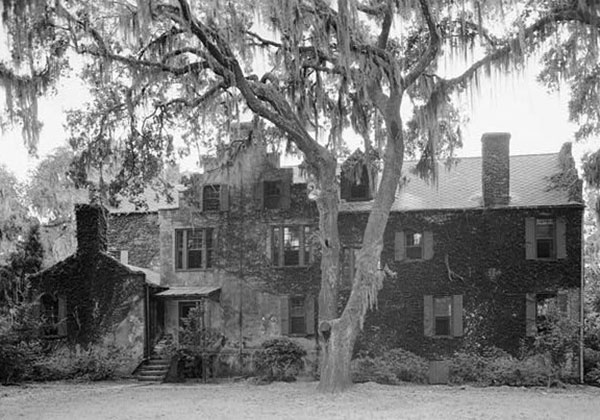Medway, cornerstone of Medway Plantation, is said to be South Carolina’s oldest remaining house. It may also be the oldest mortar house in the Carolinas.
Medway Plantation’s history is not only of locally produced handmade bricks and serving various uses over more than three centuries, but it is bonded to its owners, a parade of historical and colorful people.
Medway’s Dutch Architecture
Medway’s architecture reflects its original owner, Jan Van Arssens, who led a small group of settlers from Holland to the Province of Carolina in the 1680s. His grant was for 1200 acres. Subsequent owners, some of whom have added on to this gem of Medway Plantation, have kept true to the Dutch architecture. The Berkeley County plantation is on the present Back River, a branch of the Cooper River, and known long ago as the “Meadway” or “Medway.
Van Arssens died not long after his arrival and his widow, Sabrina de Vignon, married Thomas Smith, a doctor and merchant, who was already a large landowner. Indeed, it is they who may have built the original house. The marriage may have made Smith one of the richest men in the province. A visitor remarked that guests were served drinks in pure silver goblets. Sabrina died shortly after this second marriage. She and both of her husbands are buried at Medway.
Next Owner: Governor of Carolina
Thomas Smith had arrived at Charleston in 1684, with his wife, the former Barbara Atkins,and their sons Thomas and George. He was named Governor of the Province of Carolina in 1693 and died in 1694. It seems as though every time a significant event happened in the lives of his wives and now himself, it was a precursor to death, as it had been for Medway’s first owner.
Thomas Smith II inherited Medway Plantation but in 1701 sold it to Edward Hyrne who left England after being accused, as a port collector, of having misappropriated 1300 pounds sterling. When Hyrne defaulted on the mortgage a decade later, it was back in Smith’s hands. Somehow, Medway seems to have lost its charm and prestige. During the following decades it was several times bought and sold.
Theodore Marion Buys Medway
Medway’s next well known owner was Theodore Samuel Marion, a member of South Carolina’s prestigious Marion family. His uncle, Francis Marion, served in the South Carolina Provincial Congress and was a Revolutionary War hero. The Marions were of French Huguenot origin.
Medway passed on to Theodore Marion’s grandson, Theodore Samuel DuBose, who eventually sold it to Peter Gaillard Stoney, his brother-in-law.
Medway Plantation Becomes Productive
It was Peter Stoney who put Medway Plantation on the map as a competitive business operation and a working plantation which could be compared to some of the low country’s finest. He got it into year-round production, raising rice during the growing season, then switching to brick making after the harvest. Medway and neighboring plantations produced what became known as “Carolina Grey” bricks made from river bank clay. Stoney also harvested timber.
Medway’s bricks were used to build Charleston homes for plantation owners to live in during the gala winter entertaining season. Some accounts also claim that Medway’s bricks were used in the construction of Fort Sumter in the Charleston Harbor.
Peter added the east and west wings to the house before his nephew, Samuel Gaillard Stoney, purchased the plantation in 1906. Samuel rebuilt the house’s stepped gable and his wife Louisa brought the lawn and gardens back to life. The Stoneys also raised thoroughbred horses. Both a friend and Samuel’s son wrote books which mention Medway.
Medway’s Rich Benefactor Provides for Its Future
Gertrude (Sanford) Legendre and husband Sidney bought Medway in 1930. She would compete with former owner Peter Gaillard Stoney as to who owned Medway the longest and who did the most for it.
Gertrude was a wealthy heiress who made Medway her principle home for 70 years. A former explorer and big game hunter, she became a World War 2 spy. Sidney died in 1948 and Gertrude outlived him by more than 50 years. Both are buried at Medway. The Legendres bought two adjoining plantations and several other neighborhood parcels, ending up with 7,600 acres.
Gertrude once complained that strip malls were popping up where neighboring plantations had been. She propelled Medway into the future and bequeathed it with not only a financial reservoir, but also the Medway Environmental Trust, which continues to manage the plantation as a protected nature preserve.
Sources:
- National Park Service Survey of Historic Sites and Buildings
- Heitzler, Michael James, Goose Creek: A Definitive History: Planters, Politicians and Patriots (2005: The History Press, Charleston)
- Medway Plantation, website of South Carolina Tri County Genealogy








